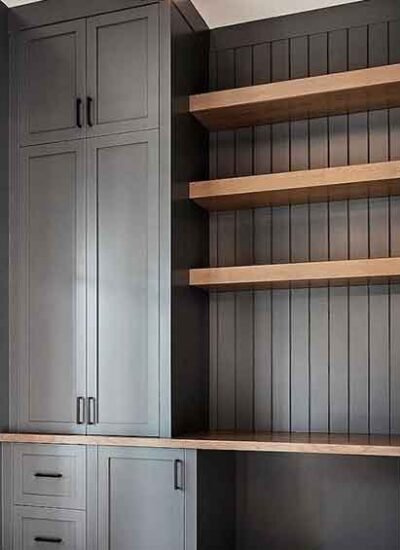The custom cabinet installation transforms your kitchen into an unparalleled joyful experience. Looking at the cabinets with clean trim, detailed finishes, and meticulous designs brings pride and satisfaction. Custom cabinets are more than an aesthetic feature. They add value to the home regarding beauty, functionality, and overall worth.
After the initial astonishment settles, other concerns begin to arise and foremost on your mind is, “how to keep these captivating cabinets looking brand new.” Cabinets scratching from rough cleaning materials, daily work chores, or even unintentional clashes can quickly ruin the appearance and compromise the finishing of your cabinetry.
Even with excessive awareness and care, the good news is that most of the scratches can be avoided with little awareness and care. In this article, we share practical tips and steps on how to protect these custom kitchen cabinets from damage ensuring they remain in the pristine condition they are intended to for a long time.
- Use Soft-Close Hardware
If your cabinets do not possess soft-close hinges or drawer slides, think about acquiring them. Features such as soft-close reduce impact when closing doors or drawers which could misaligned contacts and scratches.
- Avoid Slamming Doors and Drawers
This may sound self-evident, yet it remains one of the most widespread sources of scratches and dents due to lack of awareness, particularly with children in the home. It is your responsibility to educate everyone in your household on the proper techniques to opening cabinets. Small impacts, if repeated over a long duration, can chip paint or gouge wood, and deep scratches become life enduring issues.
- Install Bumpers and Pads
These are affordable but highly effective in avoiding contact scratches caused cabinet bumpers and soft pads that are placed on the inner corners of cabinet doors. If your cabinet did not come with them, you can fetch the adhesive ones from the hardware and install them within a few minutes.
- Be Mindful With Cookware and Utensils
Sharp cooking utensils and metal cookware such as pots and pans should not be allowed to bang against cabinet doors and frames. It becomes very easy to scrape the polish with sharp or hard tools while removing items stored in upper cabinets or when opening drawers at a brisk pace.
Pro Tip: Use cutlery trays to prevent utensils from scratching the internals of drawers or overflowing while opening drawers.
- Clean Using Only Soft Cloths
Do not use abrasive sponges, stiff brushes or steel wool. Use soft cotton or microfiber cloths when cleaning your cabinets. If cleaning products are used, they need to be non-abrasive and suitable for the stain finish of the cabinets, whether it be painted, stained or lacquered.
- Watch for Jewelry and Zippers
It is quite simple to accidentally touch cabin doors while cooking or cleaning. Zippers, rings, bracelets, and belt buckles can all be very damaging to the surface. Try not to lean or rest against the cabinet fronts unnecessarily.
- Protect Base Cabinets From Foot Traffic
Shoes, pets, and even vacuum cleaners pose the most damage to the lower cabinets in the form of scratches and scuff marks. A small rug in front of the sink and stove not only protects from scratches but also against spills and drips.
- Don’t Overfill Cabinets
Overstuffing cabinets can lead to scratches on the interiors when trying to remove and replace objects within the cabinet. This is the case more so with appliances having metal edged glasses, baking pans or other items.
Final Thoughts
Custom kitchen cabinets can enhance the aesthetic value and utility of the kitchen area but require a certain level of care to maintain their finish. Covering them with Cookware Straps, hitting them with light scrub brush, and using protective cleaning equipment helps in maintaining their balance endlessly.
Avoid Screws Bumpers, relax proprietary cover that shifts cabinet doors gently into place, and slow-motion pivots to protect frequently used zones help scrub dash close grooves. Adopting these measures allows getting utmost visual appeal for long durations post installation.
Withstandable vigor coupled with light cleaning allows upholding defined contours of countertops serving the kitchen to stand as centerpiece externally and internally allowing escaping into the future and fur keeping surface gleaming for the long run.






Leave a Reply